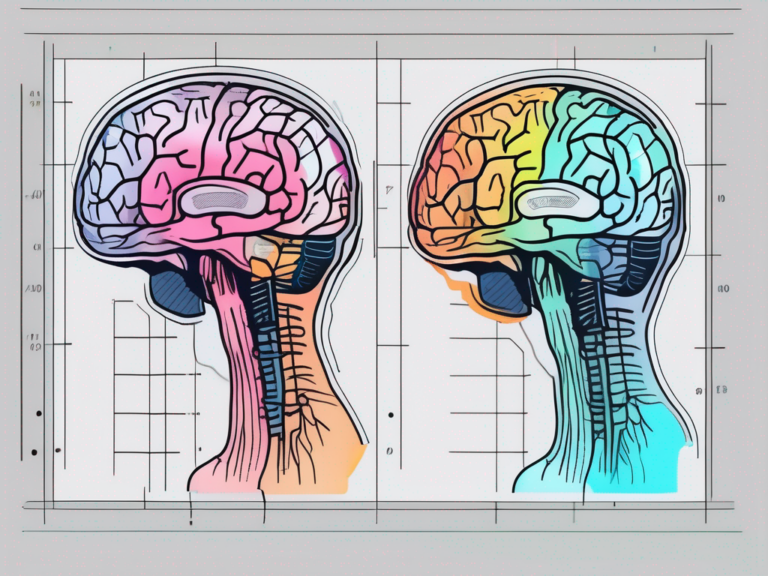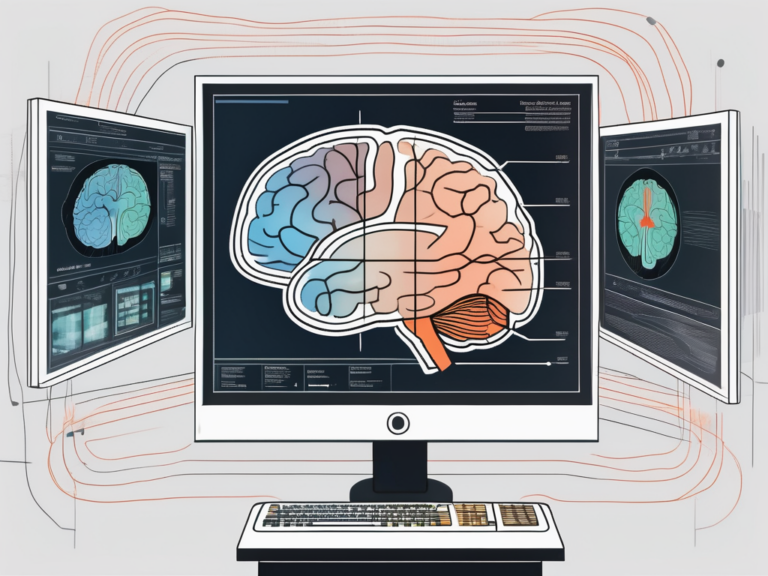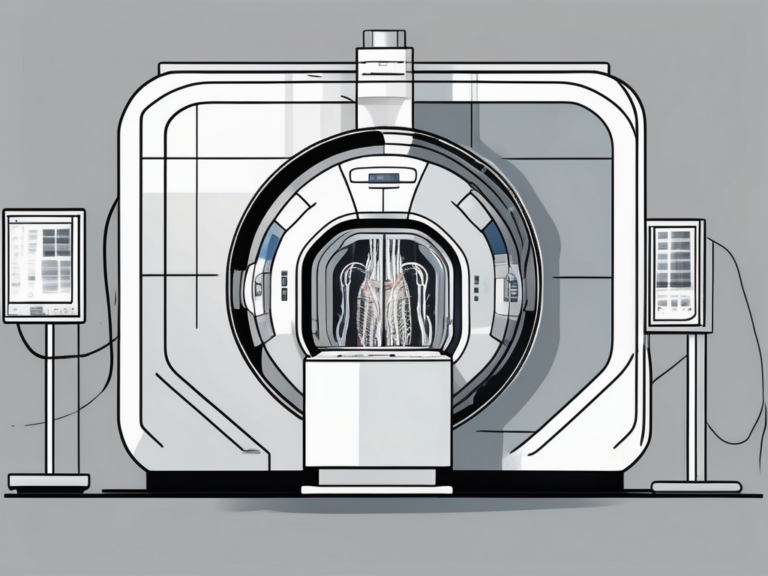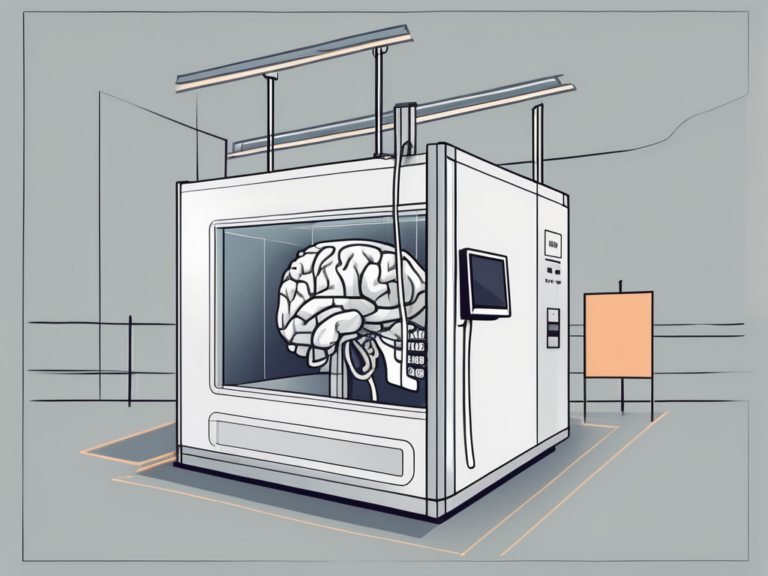what does fmri directly measure?
In the ever-evolving field of neuroscience, functional magnetic resonance imaging (fMRI) has emerged as a powerful tool for understanding the human brain. By harnessing the principles of magnetic resonance imaging (MRI), fMRI allows scientists and researchers to investigate brain function in a non-invasive and detailed manner. But what exactly does fMRI directly measure? In this article, we will explore the basics of fMRI, the processes involved in fMRI scanning, and the applications of this technology in various fields.
Understanding the Basics of fMRI
Before diving into the specifics of what fMRI measures, it is important to have a solid grasp of the fundamentals of this imaging technique.
Functional magnetic resonance imaging, or fMRI, has revolutionized the field of neuroscience by providing researchers with a powerful tool to investigate brain function. By utilizing the principles of magnetic resonance imaging in conjunction with the unique properties of blood flow in the brain, fMRI offers a window into the dynamic processes underlying cognition, emotion, and behavior.
Defining fMRI: A Brief Overview
Functional magnetic resonance imaging, commonly referred to as fMRI, is a non-invasive imaging method that allows researchers to study brain activity in real-time. Unlike traditional MRI, which provides detailed anatomical images, fMRI measures changes in blood oxygenation to infer neural activity.
Through the use of powerful magnets and radio waves, fMRI detects the magnetic properties of hemoglobin in the blood, specifically focusing on the differing magnetic properties of oxygenated and deoxygenated hemoglobin. This distinction forms the basis for the BOLD signal, which is the cornerstone of fMRI data analysis.
The Science Behind fMRI Technology
To comprehend what fMRI directly measures, we must explore the underlying science. At its core, fMRI relies on the Blood Oxygen Level Dependent (BOLD) contrast principle. When brain regions become active, they require an increased supply of oxygenated blood. By detecting changes in blood oxygenation levels, fMRI indirectly captures neural activity.
Furthermore, fMRI studies often involve complex data analysis techniques to differentiate between signal and noise, allowing researchers to map brain activity with high spatial resolution. By combining fMRI with other neuroimaging modalities and behavioral measures, scientists can gain a comprehensive understanding of the brain’s intricate functions and how they relate to human behavior and cognition.
What fMRI Directly Measures
Now that we have a foundation in the basics, let us explore what fMRI directly measures.
Functional Magnetic Resonance Imaging (fMRI) is a powerful neuroimaging technique that allows researchers to non-invasively investigate brain function. By measuring changes in blood flow and oxygen levels, fMRI provides a window into the dynamic activity of the brain. This technology has revolutionized our understanding of neural processes and has applications in various fields, including psychology, neuroscience, and medicine.
The Role of Blood Oxygen Level Dependent (BOLD) Contrast
When neurons fire, they consume oxygen and glucose. To sustain this increased activity, nearby blood vessels dilate, ensuring an adequate supply of oxygenated blood. This phenomenon, known as neurovascular coupling, forms the basis of the BOLD contrast utilized by fMRI. By detecting fluctuations in blood oxygenation levels, fMRI provides insights into brain activity.
Moreover, the BOLD signal is not only influenced by neural activity but also by other physiological factors such as heart rate, respiration, and blood pressure. Researchers employ sophisticated statistical techniques to differentiate between neural signals and noise, ensuring the accuracy of the data obtained from fMRI scans.
Understanding Neural Activity Through fMRI
While fMRI does not measure neural activity directly, it provides valuable information about brain regions that are engaged during specific tasks or mental states. By analyzing changes in blood oxygenation levels across the brain, researchers can identify active regions and study their functional connectivity. This data allows for a deeper understanding of brain functions and their relationship to cognition, behavior, and various disorders.
Furthermore, fMRI studies have revealed intricate networks of brain regions that collaborate to perform complex cognitive functions such as decision-making, memory formation, and emotional processing. By combining fMRI with other neuroimaging techniques and behavioral assessments, researchers can unravel the mysteries of the human brain and pave the way for innovative interventions in neurological and psychiatric disorders.
The Process of fMRI Scanning
Now that we understand what fMRI directly measures, let us explore the process involved in conducting an fMRI scan.
Preparing for an fMRI Scan
Before entering the MRI scanner, individuals must remove any magnetic objects from their person. Patients are positioned on a scanning table and secured in place to minimize movement during the scan. Earplugs or headphones may be provided to reduce the noise generated by the scanner.
Furthermore, patients are often given a panic button to hold during the scan. This button allows them to communicate with the MRI technologist in case they experience discomfort or claustrophobia inside the narrow chamber of the MRI machine. The technologist observes the patient through a window and can provide reassurance or stop the scan if necessary.
What Happens During an fMRI Scan
During the scan, the patient lies inside a cylindrical chamber while the MRI machine generates a strong magnetic field and emits radio frequency pulses. These pulses cause hydrogen protons in the body’s water molecules to align with the magnetic field. When the radio frequency is turned off, the protons return to their original position, releasing energy that is detected by the MRI machine.
The data collected during an fMRI scan is processed to create a series of images that depict changes in blood flow across the brain. These images provide valuable insights into the neural correlates of various cognitive processes, sensory perception, and emotional states.
Moreover, fMRI scans can be tailored to specific tasks or stimuli to investigate brain activity associated with particular functions. For example, researchers may ask participants to perform memory tasks or view emotional images while undergoing an fMRI scan. By analyzing the brain’s response to these stimuli, scientists can gain a deeper understanding of how different regions of the brain are involved in complex cognitive processes.
Interpreting fMRI Results
Once the data is collected and the images are generated, interpreting fMRI results requires careful analysis and expertise. Researchers delve into the intricate world of brain imaging to decipher the complex patterns of neural activity that underlie cognitive processes and behaviors.
Understanding fMRI results involves more than just observing colorful brain scans; it requires a deep comprehension of neuroanatomy, cognitive psychology, and statistical analysis. Researchers must navigate through a sea of data points to extract meaningful insights about how different regions of the brain interact and function in various scenarios.
Decoding fMRI Images
Interpreting fMRI images involves identifying areas of the brain that show changes in blood oxygenation levels during specific tasks or conditions. Specialized software and statistical analyses are used to compare brain activity patterns across groups of subjects or within an individual over time. These analyses provide crucial information about which brain regions are activated or deactivated during different cognitive tasks, shedding light on the neural mechanisms underlying human behavior and cognition.
Moreover, fMRI data interpretation extends beyond just identifying activated brain regions. Researchers also explore the connectivity between different brain regions, known as functional connectivity, to uncover how neural networks collaborate to support various cognitive functions. By analyzing the synchronization of activity between brain regions, scientists can gain insights into the brain’s intricate wiring and how it facilitates complex cognitive processes.
Limitations and Challenges in fMRI Data Interpretation
While fMRI is a valuable tool, it does come with limitations and challenges. Factors such as the resolution of the scan, individual variability, and statistical analysis methods can impact the interpretation of results. Researchers must grapple with the inherent noise in fMRI data, distinguishing true signals from random fluctuations to ensure the reliability of their findings.
Furthermore, the field of fMRI research constantly evolves as scientists strive to address these limitations and refine their methodologies. Advanced techniques such as multivariate pattern analysis and machine learning algorithms are being employed to enhance the sensitivity and specificity of fMRI data interpretation, pushing the boundaries of our understanding of the human brain.
Applications of fMRI in Various Fields
Now that we understand what fMRI measures and how results are interpreted, let us explore the diverse applications of this technology.
Functional Magnetic Resonance Imaging (fMRI) has revolutionized the field of neuroscience research by providing a non-invasive method to study brain activity. In addition to cognitive functions like attention, memory, decision-making, and language, fMRI is also used to investigate emotions, social interactions, and sensory processing. This technology allows researchers to create detailed maps of brain regions involved in specific tasks, shedding light on the complex workings of the human brain.
fMRI in Neuroscience Research
Neuroscientists utilize fMRI to investigate brain processes underlying various cognitive functions, such as attention, memory, decision-making, and language. By mapping brain activity patterns, researchers gain insights into the intricacies of the human mind.
Moreover, fMRI is instrumental in studying brain development across the lifespan. Researchers can track changes in brain activity from infancy to old age, providing valuable information on how the brain adapts and responds to different stimuli over time. This longitudinal approach helps in understanding neuroplasticity and age-related cognitive decline.
Clinical Applications of fMRI
The clinical applications of fMRI are vast and continue to expand. In the realm of clinical psychology, fMRI aids in diagnosing and monitoring psychiatric disorders, studying addiction and rehabilitation, and assessing treatment efficacy. Furthermore, pre-surgical mapping using fMRI helps identify critical functional areas, ensuring safer brain surgeries with minimal damage to vital regions.
Additionally, fMRI plays a crucial role in the field of neurology by assisting in the early detection and monitoring of neurological disorders such as Alzheimer’s disease, Parkinson’s disease, and multiple sclerosis. The ability of fMRI to visualize changes in brain activity associated with these conditions helps in early intervention and personalized treatment strategies for patients.
Future of fMRI
As technology advances, the future of functional magnetic resonance imaging (fMRI) holds great promise for further expanding our understanding of the human brain. The non-invasive nature of fMRI, coupled with its ability to map brain activity in real-time, has revolutionized the field of neuroscience.
Researchers are continually pushing the boundaries of fMRI technology to enhance its capabilities and applications. One area of focus is the development of ultra-high field MRI scanners, which offer increased spatial resolution and sensitivity. These next-generation scanners have the potential to provide unprecedented insights into the complex neural networks of the brain.
Technological Advancements in fMRI
Ongoing research not only focuses on improving resolution, signal-to-noise ratio, and image quality in fMRI but also on enhancing the temporal resolution of scans. By capturing brain activity with higher temporal precision, researchers can gain a more detailed understanding of the dynamics of neural processes.
Moreover, advancements in fMRI hardware, such as the use of multiband imaging techniques, enable the simultaneous acquisition of multiple brain slices. This approach allows for faster imaging times and more comprehensive coverage of the brain, opening up new possibilities for studying large-scale brain networks and their interactions.
Potential New Areas for fMRI Application
As our knowledge grows, fMRI may find applications in a myriad of new and exciting areas. For instance, researchers are exploring the use of fMRI for lie detection by analyzing patterns of brain activity associated with deception. Additionally, fMRI holds promise in studying consciousness by investigating the neural correlates of subjective awareness.
Furthermore, the field of social neuroscience is increasingly utilizing fMRI to delve into the neural basis of empathy and social cognition. By examining brain activity during social interactions, researchers can uncover the underlying mechanisms that drive human behavior and relationships.
Brain-computer interfaces represent another burgeoning field where fMRI technology could play a pivotal role. By decoding brain signals in real-time, fMRI has the potential to enable direct communication between the brain and external devices, offering new possibilities for individuals with motor disabilities.
These potential applications highlight the immense potential of fMRI technology in uncovering the mysteries of the human brain and pushing the boundaries of cognitive neuroscience. The future of fMRI is indeed a landscape of innovation and discovery, where each technological advancement opens up new avenues for exploring the complexities of the mind.






